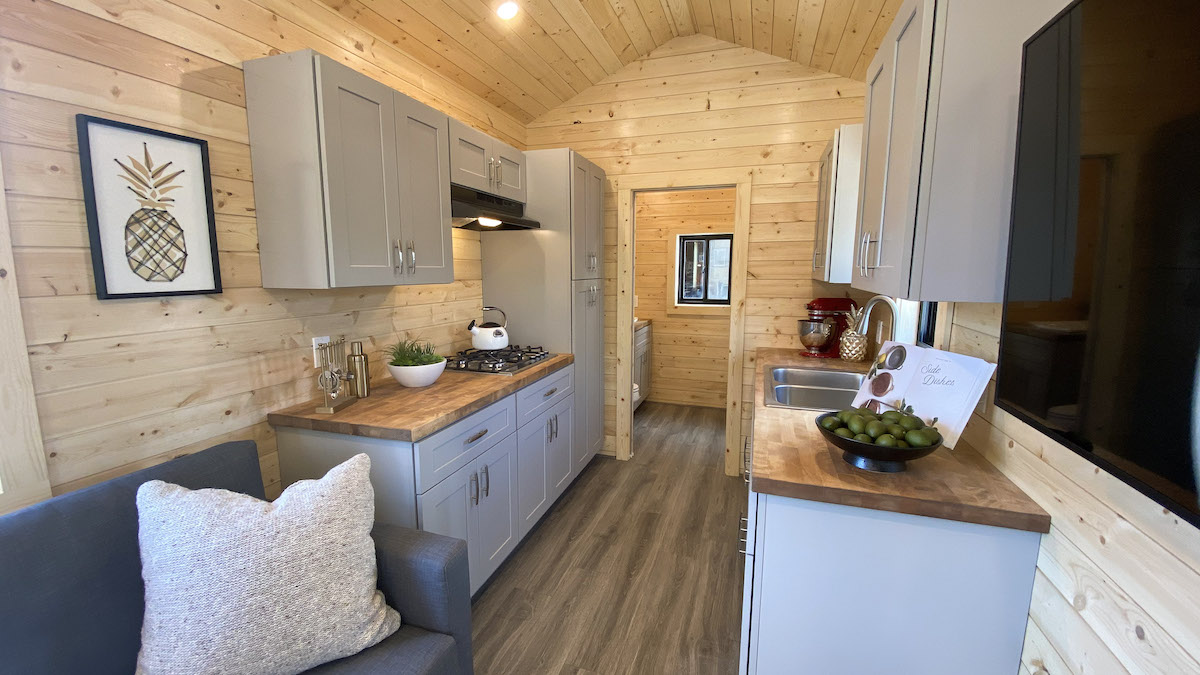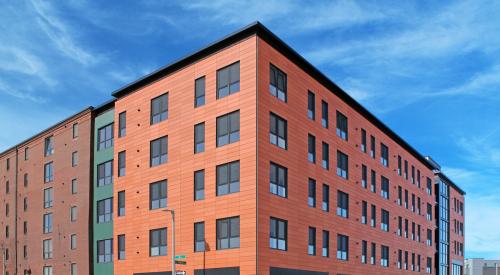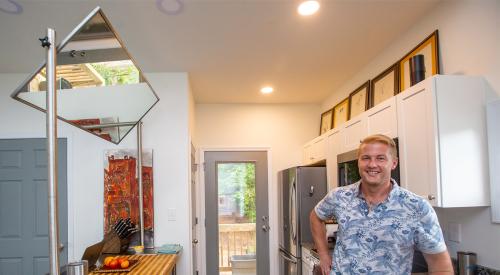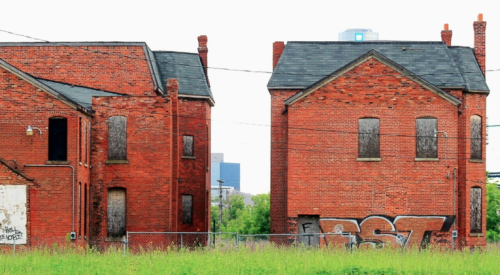In the outskirts of Flagstaff, Arizona, a cluster of tiny homes exudes Instagram appeal. Their sleek, wood-lined interiors feature barn doors, tiled showers, expansive windows, higher-end fixtures, and a cozy loft that can serve as a second bedroom.
“People want to downsize and be more environmentally friendly but not give up on the cool stuff—like the tech-forward, smart home that looks good on Instagram and feels higher end but without being out of touch financially,” says Ryan Scott, CEO and founder of Aspire Fund, the Arizona project’s developer.
More people are turning to tiny homes. Fifty-six percent of Americans say they would move into a tiny house, according to a survey conducted in November by IPX1031, a subsidiary of Fidelity National Financial. And 86 percent of first-time buyers say they’d consider purchasing a tiny house as their starter home.
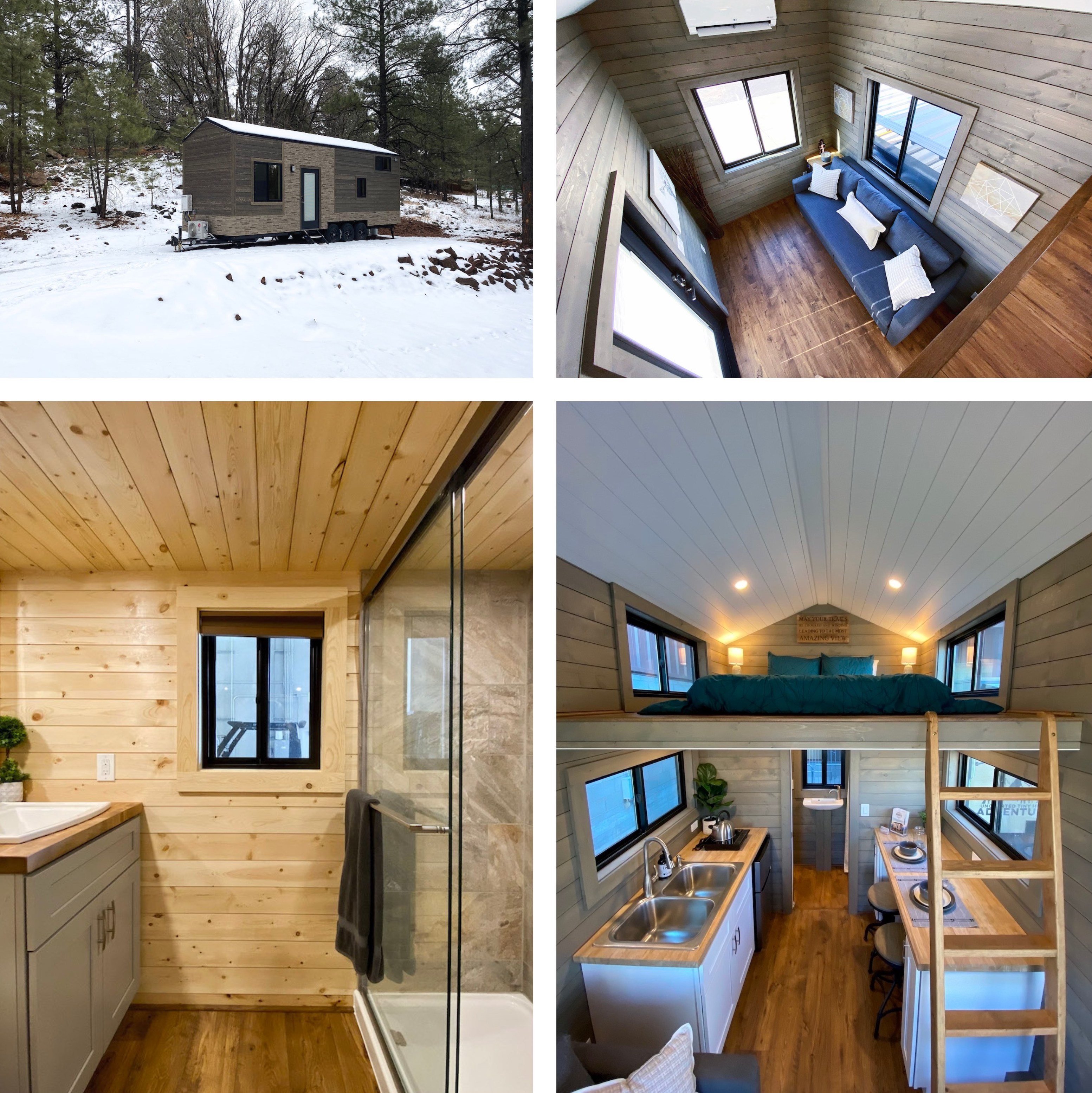
Scott, a tech consultant by day, has been investing in real estate since 2010, first single family homes and later vacation rentals. When he sold these properties, he could defer capital gains taxes by reinvesting the proceeds in other, similar properties. But then he started to explore a different kind of investment option called an opportunity zone fund.
Created by the Tax Cuts and Jobs Act of 2017, opportunity zones are economically distressed communities, nominated by their states and designated by the IRS. With an opportunity zone fund, investors can put their capital gains in a property or business inside a qualified zone, and their gains tax gets deferred through 2026. And if they remain in that investment for 10 years, they avoid any capital gains tax.
There’s a caveat, however: A opportunity zone fund’s property has to be “substantially improved”—that is, its value has to be doubled.
“It’s a massive benefit and incentive,” Scott says. “The program incentivizes investors who have capital gains locked up in an asset to reinvest them, rather than having them just sit in an investment.”
Scott decided to create his own opportunity zone fund, Aspire Fund. He raised a couple of million dollars from investors and set his sights on Arizona, where he moved from San Diego in 2019. Arizona not only has plenty of opportunity zones, but it also has one of the worst affordable housing shortages in the country. In December, Flagstaff’s city council declared an affordable housing emergency.
Aspire Fund’s tiny house development
In late 2018, Aspire Fund purchased 1.5 acres in an opportunity zone outside Flagstaff and split it into nine lots. The developer first built a couple of higher-end manufactured homes, but it faced pandemic-related supply chain delays.
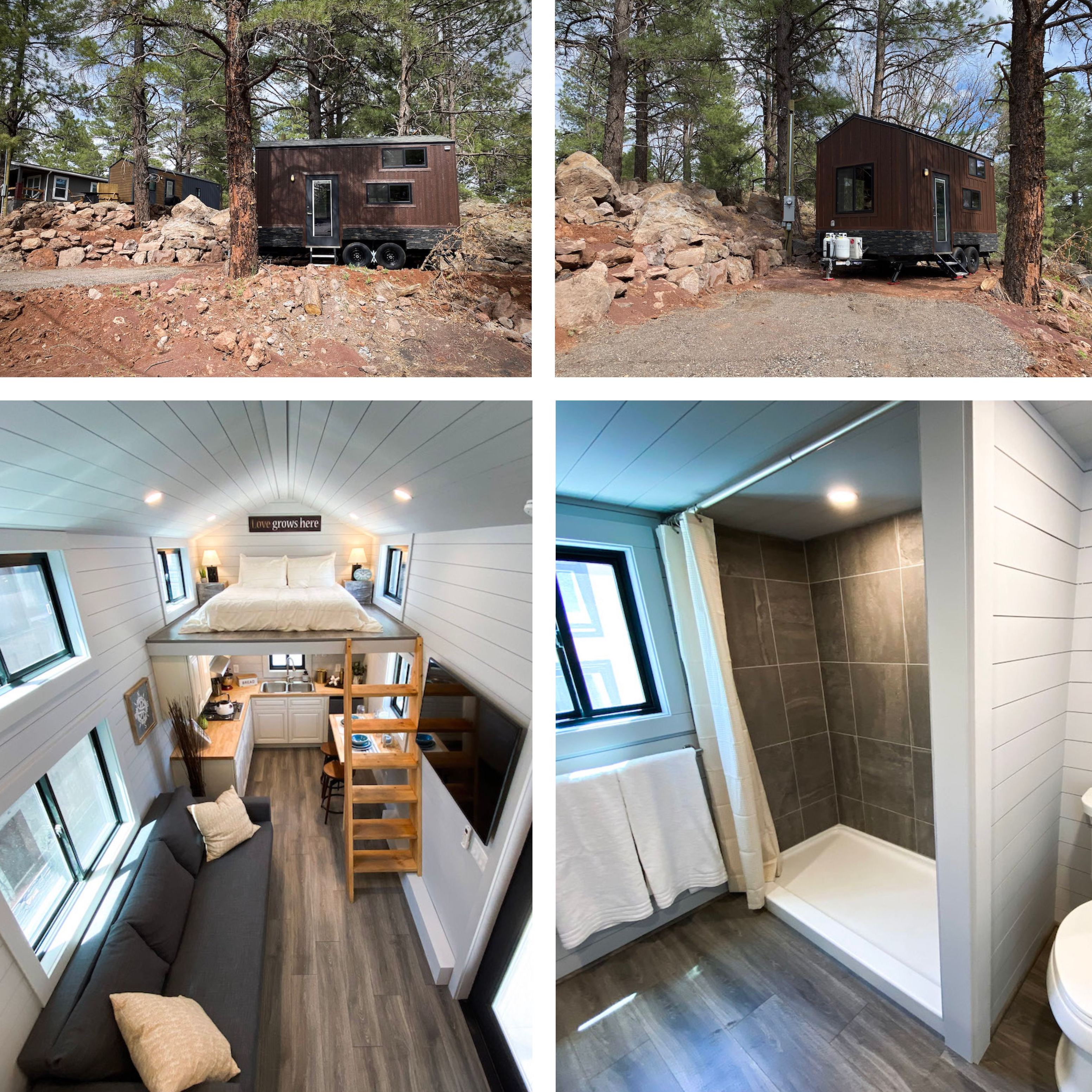
So Scott turned to another type of product: tiny homes—specifically, tiny homes on wheels. “It provided a way to more quickly produce the homes we need,” he says. Another benefit: Because the units aren’t affixed to the ground, Aspire Fund wouldn’t have to spend as much time or money creating completely flat and level slabs. To construct the prefab units, Scott tapped Uncharted Tiny Homes in Phoenix.
But Scott also had to get the county’s approval. There are no building codes for tiny houses—or even a commonly accepted definition. Most local zoning codes don’t mention them.
Working with the county’s building division, Aspire Fund made the case that because its tiny homes are, in effect, factory-built RVs, the division could simply ensure they met RV requirements. The county officials agreed, and the project became Coconino County’s first fully permitted tiny home community.
Tiny homes from Aspire Fund hit Airbnb
Aspire Fund’s first tiny homes went into place last year, with the last one going in this summer. Ranging in size from about 200 to 320 square feet, each home cost Aspire Fund about $165,000, including about $85,000 for the unit itself and the rest in development costs. As short-term rentals, they go for $100 to $150 per night (check out the Airbnb listing here and below).
“Don’t take it personally when they’re confused about what you’re pitching. They’re not used to it,” Scott advises other developers looking to get local government approval for tiny home projects. “Now this is a viable option for the county and in the future with other locations.”
Aspire Fund’s next project, also outside Flagstaff, will comprise 25 lots: a mix of furnished short-term and unfurnished long-term rentals.


